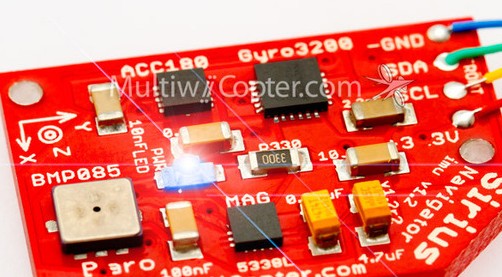Unfortunately the FTDI (USB to serial) board didn't arrive with the MultiWii, so out came ol' faithful (without the ATMEGA chip) to let me connect the flight controller to my PC.
MultiWii has a GUI for checking the board is working and setting up the PID and receiver systems. This is incredibly useful as it lets you see what the control inputs are, the sensor values and the motor outputs. I didn't play around with the pre-loaded PID values, but I did set my radio transmitter end-stops so that the flight controller can detect full deflection or min/max throttle. There is a multiwii guide here that covers PIDs. Example guides on Tx/Rx tuning etc are here and here.
First flight with the new board was in a gently gusting south-easterly wind. I'd set an AUX channel on the transmitter to enable ACC/BARO/MAG hold (basically to stabilise pitch, roll, heading and altitude!) and flew with it ON almost exclusively. The quadcopter is much easier to handle and recover when a gust pushes it out of position. I even had a go at a few fast flybys... Not quite up to this standard though:



